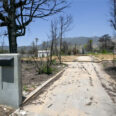
Chan was born in San Francisco on October 5, 1936, to immigrant, working-class parents. He spent his early childhood in what he described as a “culturally disadvantaged” environment. “There was not a drop of academic blood in my body,” he once wrote. But he eventually pursued an interest in math and science that was ignited by teachers at a Jesuit school in Hong Kong and went on to become the first in his family to attend college and eventually earn his doctorate. He received his PhD from UC Berkeley in 1961.
He began his Caltech career as an assistant professor of chemical physics in 1963 and became a tenured member of the faculty in 1968. In 1992, he was named the George Grant Hoag Professor of Biophysical Chemistry.
Chan’s research evolved from fundamental studies in chemical physics to the use of nuclear magnetic resonance to investigate biological molecules, including the base stacking of nucleic acids, the dynamic structures of membranes, and the function of membrane proteins. In his work, he made extensive use of nuclear magnetic resonance (NMR), a non-invasive, highly sensitive method that exploits the magnetic properties of atomic nuclei. When certain nuclei, such as hydrogen or nitrogen, are placed in a magnetic field, they absorb and re-emit electromagnetic radiation at characteristic frequencies. These signals can provide insights into the local environment of the nitrogen, carbon, and hydrogen atoms in molecules such as nucleic acids and proteins, allowing scientists to deduce their structures and compositions in solution and under dynamic conditions.
Chan received a Guggenheim Fellowship in 1968, and was elected to the American Academy of Arts and Sciences in 2010. Chan was also a fellow of the American Physical Society. In 1988, he became a member of Academia Sinica, Taiwan’s national academy. Chan retired from Caltech in 1997 and received emeritus status from the Institute in 2002. During his time at Caltech, Chan also served as executive officer for chemistry from 1978 to 1980 and again from 1989 to 1994. He was also master of student houses from 1980 to 1983.
He served as vice president of Academia Sinica from 1999 to 2003. To honor Chan for his service there, Academia Sinica established a lecture in his name in 2003. The lecture website says of Chan, “He has been particularly inspirational to young scientists, and the generosity, with which he has shared his chemistry, insights about science, wisdom on life, and his knowledge about wine, food, gourmet dining, and restaurants, is well known throughout the community here.”
In 2009, Chan published a review article in the Annual Review of Biophysics in which he discussed the trajectory of his career and the evolution of his work. He wrote that he “learned much” from his many (more than 200 at the time) students, postdocs, and colleagues and that many of his colleagues at Caltech had been inspirational.
“Many of my former students and postdocs have gone on to do new science and even open new areas of research,” he wrote. “I am proud of them. But that’s the way it should be. In retrospect, I like to think that my style of training students works. The most important part of doing science is asking questions, and I taught my students to ask questions and how to ask questions. Without questions, good or bad ones, there is no problem to solve.”
A viewing and symposium are being organized in Taiwan, and a service and burial will follow in San Francisco.
A full obituary will be published at a later date.














 0 comments
0 comments


